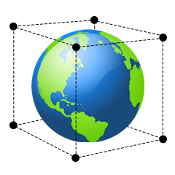We do not always ask the right questions when analyzing the evolution of communications ! For example, with respect to the future of newspapers, instead of studying the historical evolution of flows-of-information we are analyzing how they have developed only since the arrival of the new technologies.
Set out below is an example – the loss of speed of traditional newspapers. This example helps us understand similar dynamics with radio, television, cinema, etc.
Landmarks :
1631 : The emergence of the industrial era inspired the creation of the first newspapers for citizens to read, especially in order to understand the decisions imposed by the King. This was a time when information was carefully filtered by the elites. Reporters took the place of the merchants and peddlars of the Middle Ages. The first advertising networks emerged (classified ads).
1750 : Creation of the first weekly newspaper; its content expanded along with readership. It described a more worldly society: articles of practical sciences, commentaries on performances and fashion, and gave voice to readers or writers (Balzac, Hugo, Dumas). Newspapers then became an information space where censorship began to disappear.
1800 : Technological explosions multiplied the production and dissemination of information : lithography (1796), linotype (1880) and presses (1883). At the same time, trains were used (1900) to move newspapers very quickly from one city to the other.
1835 : Because of the arrival of the telegraph, and then the connections of the first submarine cable (1858) and wireless telegraph (1901), the amount of information became such that major news agencies emerged (Havas, Reuter, etc.) : these services operated as a journal for newspapers. Thus began the era of news from abroad, translations (the embryo of future language industries) and the effervescence of columnists vis-à-vis the modern societal choices that began to emerge.
1920 : The initial decline of newspapers coincides with the arrival of the second industrial revolution. We witnessed the popularization of cinema. Newspapers loses their monopoly over the use of images.
1930 : Popularization of radio. Newspapers lost the monopoly on news.
1940 : Other technological leaps : the offset (1940) and phototypesetting (1970).
1960 : Television becomes widely popular. The newspaper’s loss of monopoly on the news front was reinforced. Readers and advertisers began to abandon the print edition.
1980 : The Macintosh offers everyone the opportunity to become their own publisher.
1990 : The Internet and the Web attracted a large number of young creators and readers. Newspaper publishers don’t understand the nature of MP3’s or JPEG’s. And they continues to resist understanding and adapting.
2000 : A fundamental reorganization of content production (thus press rooms and copyright) around the digital platform (both paper and mobile digital format).
2013 : The advertising base began to abandon television in favor of Internet. The dominance of search engines commenced.
2014 : Emergence of 3D interfaces (Oculus Rift from Sony).
We do not always ask the right questions when analyzing the evolution of communications ! For example, with respect to the future of newspapers, instead of studying the historical evolution of flows-of-information we are analyzing how they have developed only since the arrival of the new technologies.
Set out below is an example – the loss of speed of traditional newspapers. This example helps us understand similar dynamics with radio, television, cinema, etc.
Landmarks :
1631 : The emergence of the industrial era inspired the creation of the first newspapers for citizens to read, especially in order to understand the decisions imposed by the King. This was a time when information was carefully filtered by the elites. Reporters took the place of the merchants and peddlars of the Middle Ages. The first advertising networks emerged (classified ads).
1750 : Creation of the first weekly newspaper; its content expanded along with readership. It described a more worldly society: articles of practical sciences, commentaries on performances and fashion, and gave voice to readers or writers (Balzac, Hugo, Dumas). Newspapers then became an information space where censorship began to disappear.
1800 : Technological explosions multiplied the production and dissemination of information : lithography (1796), linotype (1880) and presses (1883). At the same time, trains were used (1900) to move newspapers very quickly from one city to the other.
1835 : Because of the arrival of the telegraph, and then the connections of the first submarine cable (1858) and wireless telegraph (1901), the amount of information became such that major news agencies emerged (Havas, Reuter, etc.) : these services operated as a journal for newspapers. Thus began the era of news from abroad, translations (the embryo of future language industries) and the effervescence of columnists vis-à-vis the modern societal choices that began to emerge.
1920 : The initial decline of newspapers coincides with the arrival of the second industrial revolution. We witnessed the popularization of cinema. Newspapers loses their monopoly over the use of images.
1930 : Popularization of radio. Newspapers lost the monopoly on news.
1940 : Other technological leaps : the offset (1940) and phototypesetting (1970).
1960 : Television becomes widely popular. The newspaper’s loss of monopoly on the news front was reinforced. Readers and advertisers began to abandon the print edition.
1980 : The Macintosh offers everyone the opportunity to become their own publisher.
1990 : The Internet and the Web attracted a large number of young creators and readers. Newspaper publishers don’t understand the nature of MP3’s or JPEG’s. And they continues to resist understanding and adapting.
2000 : A fundamental reorganization of content production (thus press rooms and copyright) around the digital platform (both paper and mobile digital format).
2013 : The advertising base began to abandon television in favor of Internet. The dominance of search engines commenced.
2014 : Emergence of 3D interfaces (Oculus Rift from Sony).

Leave A Comment